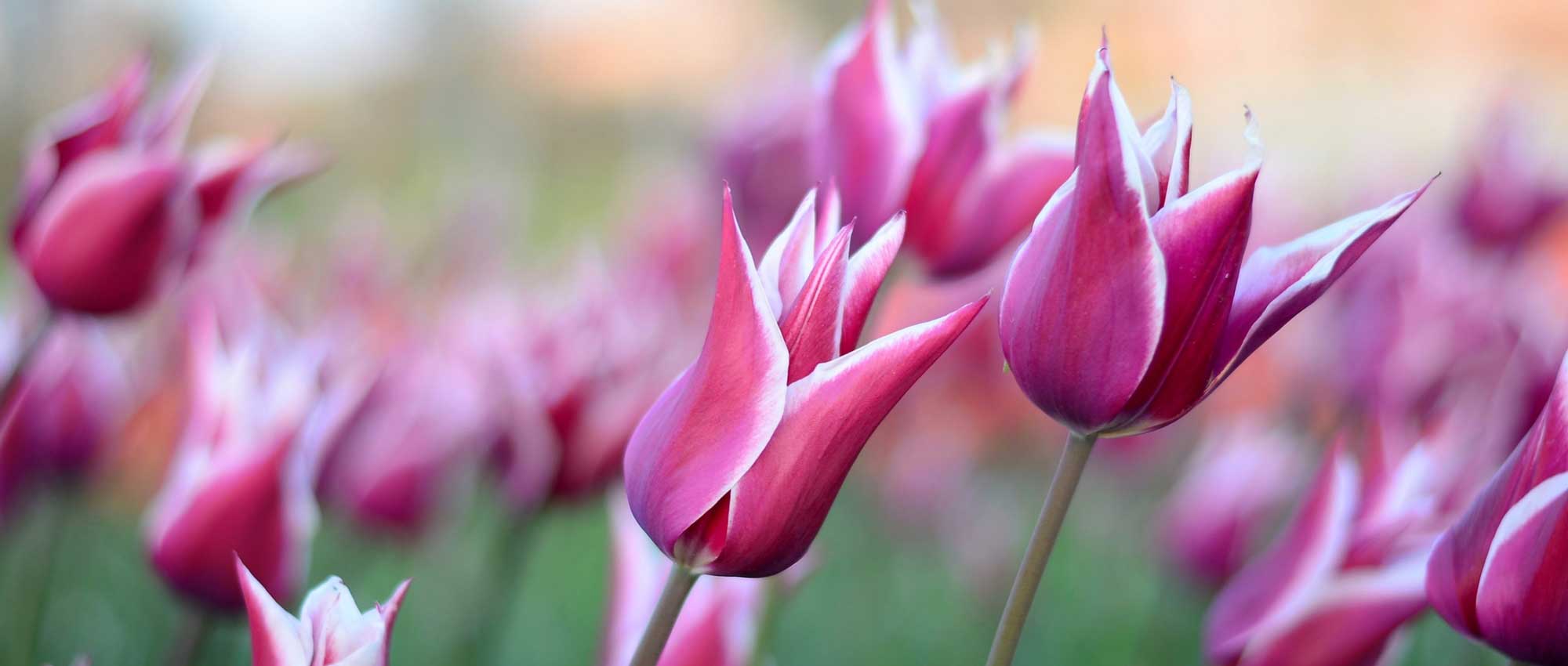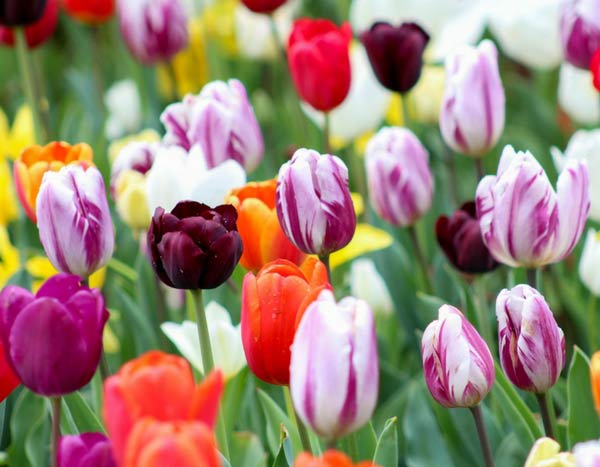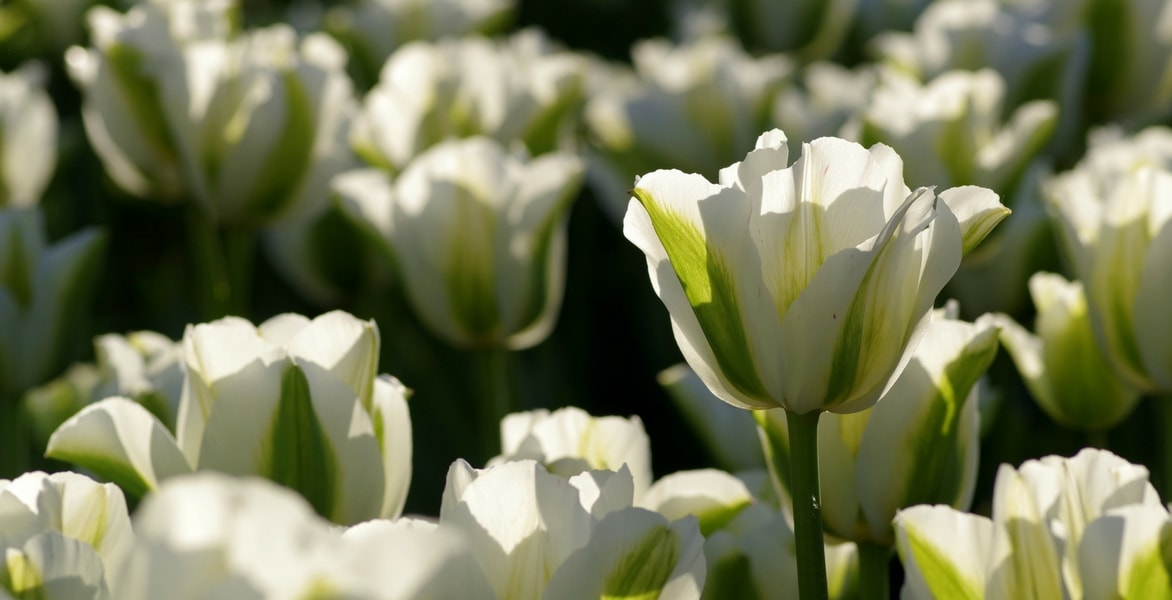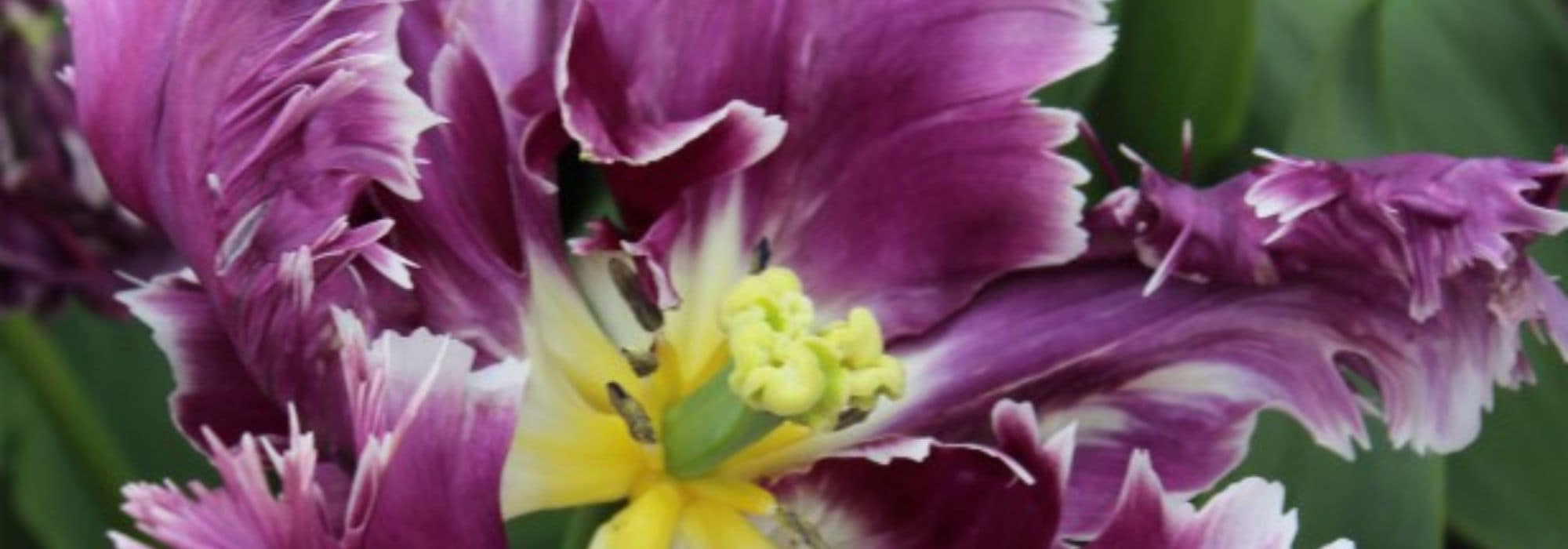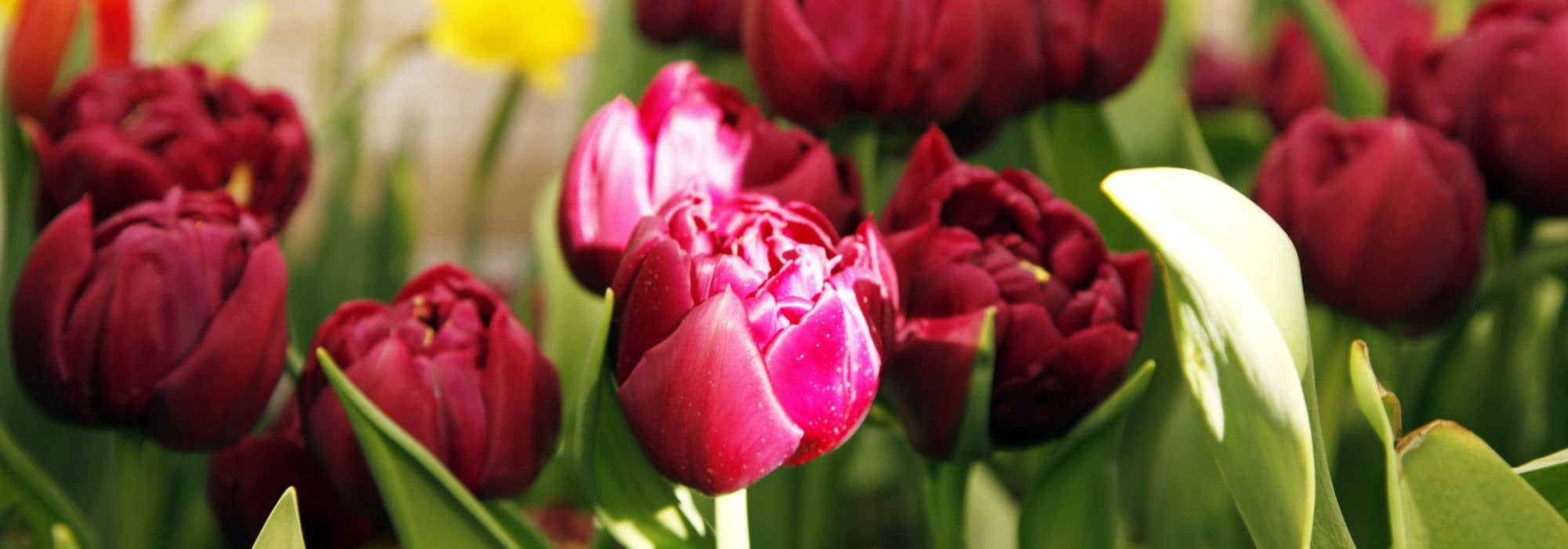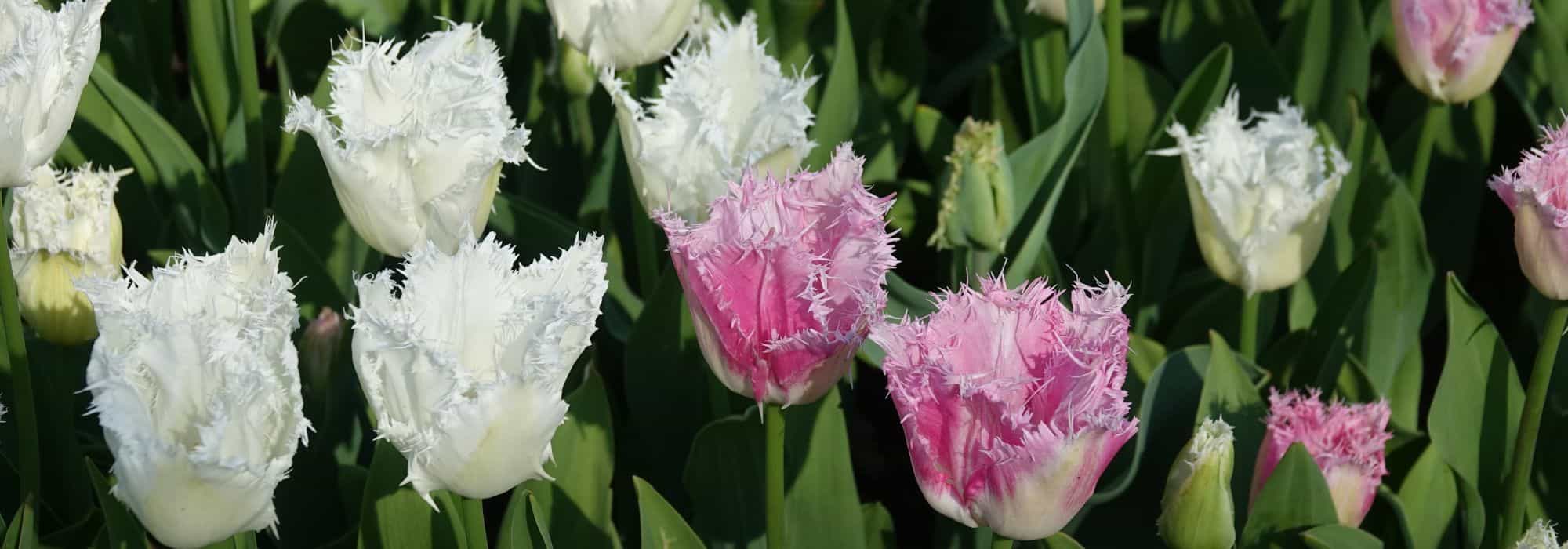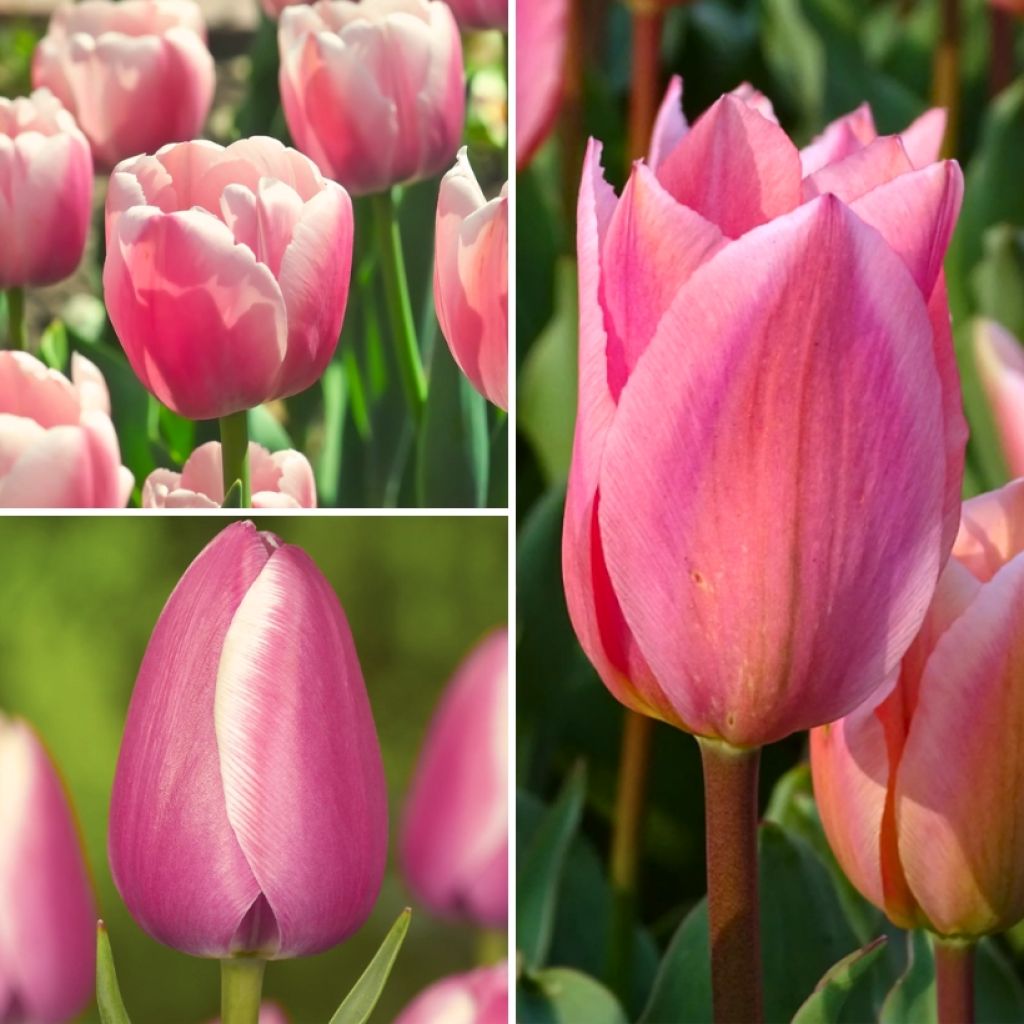

2 Months of Pink Tulips Collection
2 Months of Pink Tulips Collection
Tulipa Albert Heijn, Ollioules, Jumbo Beauty
Special offer!
Receive a €20 voucher for any order over €90 (excluding delivery costs, credit notes, and plastic-free options)!
1- Add your favorite plants to your cart.
2- Once you have reached €90, confirm your order (you can even choose the delivery date!).
3- As soon as your order is shipped, you will receive an email containing your voucher code, valid for 3 months (90 days).
Your voucher is unique and can only be used once, for any order with a minimum value of €20, excluding delivery costs.
Can be combined with other current offers, non-divisible and non-refundable.
This plant carries a 6 months recovery warranty
More information
We guarantee the quality of our plants for a full growing cycle, and will replace at our expense any plant that fails to recover under normal climatic and planting conditions.
Would this plant suit my garden?
Set up your Plantfit profile →
Collection items (30 plants)
Description
The Two Months of Pink Tulips Collection is a selection of three different varieties of pink tulips, whose flowering periods overlap continuously for two months, from March to May. These tulips have single flowers ranging from pastel pink to vibrant pink. They are ideal for adding a romantic touch to borders, flower beds, edges, and pots.
The collection includes:
10 Tulipa fosteriana 'Albert Heijn': This early variety reaches a height of 35 cm. Its large cup-shaped flowers display a beautiful candy pink colour, slightly shaded with white at the base. It starts flowering in March, marking the beginning of spring.
10 Tulipa Darwin 'Ollioules': A mid-season tulip, measuring approximately 50 cm in height. Its majestic, classic cup-shaped flowers feature a cherry pink colour bordered with white. They bloom in April, providing a perfect transition between early and late flowering varieties.
10 Late Single Tulips 'Jumbo Beauty': Reaching a height of 50-60 cm, this late variety stands out with its large flowers with intense pink petals and an almost white margin. Its flowering season extends until the end of May, beautifully concluding the tulip season.
Bulbs packed and labelled separately.
These tulip bulbs should be planted in autumn, between September and November, for optimal flowering the following spring. Plant them in borders, edges, or pots to enjoy their beauty at different heights. In a border, place the 'Jumbo Beauty' tulips at the back to create depth, the 'Ollioules' in the middle, and the 'Albert Heijn' in the foreground. For a mass effect, plant approximately 35 bulbs per square metre, with a spacing of 10-15 cm between each bulb. In pots, combine them with other spring bulbs, such as grape hyacinths or hyacinths.
Pair these pink tulips with 'Delft Blue' hyacinths, their porcelain blue spikes will complement the delicate pink of the 'Albert Heijn' tulips in the foreground of your border. The 'Mount Hood' narcissus, with its creamy white flowers, will blend in with the 'Ollioules' tulips to soften their vibrant colour while brightening up the scene. To add volume to the ensemble, place 'Duchesse de Nemours' lactiflora peonies in the background, behind the tall 'Jumbo Beauty' tulips. Their large, fragrant white flowers will take over from the tulips in late spring. Plan for approximately 10 hyacinths, 10 narcissus, and 3 peonies per square metre.
Plant habit
Flowering
Foliage
Botanical data
Tulipa
Albert Heijn, Ollioules, Jumbo Beauty
Liliaceae
Cultivar or hybrid
Planting and care
Plant your tulips as soon as possible in a well-drained soil. Loosen the soil deeply. Plant at a depth of 15 cm (Bulbs should be covered with soil twice their height). Space the bulbs a few cm apart, making sure they do not touch. Choose a sunny exposure for better flowering. After flowering, cut the flower stems and let the leaves dry completely before cutting them.
Planting period
Intended location
Care
Planting & care advice
This item has not been reviewed yet - be the first to leave a review about it.
Haven't found what you were looking for?
Hardiness is the lowest winter temperature a plant can endure without suffering serious damage or even dying. However, hardiness is affected by location (a sheltered area, such as a patio), protection (winter cover) and soil type (hardiness is improved by well-drained soil).

Photo Sharing Terms & Conditions
In order to encourage gardeners to interact and share their experiences, Promesse de fleurs offers various media enabling content to be uploaded onto its Site - in particular via the ‘Photo sharing’ module.
The User agrees to refrain from:
- Posting any content that is illegal, prejudicial, insulting, racist, inciteful to hatred, revisionist, contrary to public decency, that infringes on privacy or on the privacy rights of third parties, in particular the publicity rights of persons and goods, intellectual property rights, or the right to privacy.
- Submitting content on behalf of a third party;
- Impersonate the identity of a third party and/or publish any personal information about a third party;
In general, the User undertakes to refrain from any unethical behaviour.
All Content (in particular text, comments, files, images, photos, videos, creative works, etc.), which may be subject to property or intellectual property rights, image or other private rights, shall remain the property of the User, subject to the limited rights granted by the terms of the licence granted by Promesse de fleurs as stated below. Users are at liberty to publish or not to publish such Content on the Site, notably via the ‘Photo Sharing’ facility, and accept that this Content shall be made public and freely accessible, notably on the Internet.
Users further acknowledge, undertake to have ,and guarantee that they hold all necessary rights and permissions to publish such material on the Site, in particular with regard to the legislation in force pertaining to any privacy, property, intellectual property, image, or contractual rights, or rights of any other nature. By publishing such Content on the Site, Users acknowledge accepting full liability as publishers of the Content within the meaning of the law, and grant Promesse de fleurs, free of charge, an inclusive, worldwide licence for the said Content for the entire duration of its publication, including all reproduction, representation, up/downloading, displaying, performing, transmission, and storage rights.
Users also grant permission for their name to be linked to the Content and accept that this link may not always be made available.
By engaging in posting material, Users consent to their Content becoming automatically accessible on the Internet, in particular on other sites and/or blogs and/or web pages of the Promesse de fleurs site, including in particular social pages and the Promesse de fleurs catalogue.
Users may secure the removal of entrusted content free of charge by issuing a simple request via our contact form.
The flowering period indicated on our website applies to countries and regions located in USDA zone 8 (France, the United Kingdom, Ireland, the Netherlands, etc.)
It will vary according to where you live:
- In zones 9 to 10 (Italy, Spain, Greece, etc.), flowering will occur about 2 to 4 weeks earlier.
- In zones 6 to 7 (Germany, Poland, Slovenia, and lower mountainous regions), flowering will be delayed by 2 to 3 weeks.
- In zone 5 (Central Europe, Scandinavia), blooming will be delayed by 3 to 5 weeks.
In temperate climates, pruning of spring-flowering shrubs (forsythia, spireas, etc.) should be done just after flowering.
Pruning of summer-flowering shrubs (Indian Lilac, Perovskia, etc.) can be done in winter or spring.
In cold regions as well as with frost-sensitive plants, avoid pruning too early when severe frosts may still occur.
The planting period indicated on our website applies to countries and regions located in USDA zone 8 (France, United Kingdom, Ireland, Netherlands).
It will vary according to where you live:
- In Mediterranean zones (Marseille, Madrid, Milan, etc.), autumn and winter are the best planting periods.
- In continental zones (Strasbourg, Munich, Vienna, etc.), delay planting by 2 to 3 weeks in spring and bring it forward by 2 to 4 weeks in autumn.
- In mountainous regions (the Alps, Pyrenees, Carpathians, etc.), it is best to plant in late spring (May-June) or late summer (August-September).
The harvesting period indicated on our website applies to countries and regions in USDA zone 8 (France, England, Ireland, the Netherlands).
In colder areas (Scandinavia, Poland, Austria...) fruit and vegetable harvests are likely to be delayed by 3-4 weeks.
In warmer areas (Italy, Spain, Greece, etc.), harvesting will probably take place earlier, depending on weather conditions.
The sowing periods indicated on our website apply to countries and regions within USDA Zone 8 (France, UK, Ireland, Netherlands).
In colder areas (Scandinavia, Poland, Austria...), delay any outdoor sowing by 3-4 weeks, or sow under glass.
In warmer climes (Italy, Spain, Greece, etc.), bring outdoor sowing forward by a few weeks.

































